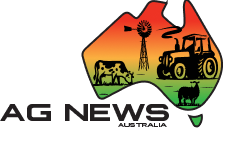
In the vast expanses of Australia's agricultural landscape, the heartbeat of the industry is the constant evolution of farm equipment. As technology continues to redefine the way we approach farming, Australian farmers find themselves at the forefront of innovation. This blog post delves into the breaking ground of the latest trends in Australian farm equipment, providing a detailed examination of the advancements that are shaping the future of agriculture down under.
Precision Agriculture: Navigating the Fields with Laser Accuracy
Precision agriculture has become the cornerstone of modern farming practices in Australia. With the integration of GPS technology and sophisticated sensors, farmers can now meticulously manage their fields, optimizing resources and increasing yields. The use of precision agriculture minimizes wastage, enhances crop quality, and significantly reduces environmental impact. Australian farmers are increasingly adopting this technology, embracing a data-driven approach to cultivate their land with unprecedented accuracy.
The adoption of drones is a striking example of this trend. Drones equipped with advanced imaging systems can provide real-time data on crop health, pest infestations, and soil conditions. This invaluable information empowers farmers to make informed decisions, leading to more sustainable and efficient farming practices.
Autonomous Machinery: The Rise of Self-Sufficient Farming
In the realm of cutting-edge farm equipment, autonomy has taken center stage. The deployment of autonomous machinery is revolutionizing the way Australian farmers operate. From self-driving tractors to automated harvesters, these machines are not only enhancing efficiency but also addressing labor shortages in rural areas.
One notable example is the emergence of robotic weeders. These intelligent machines utilize computer vision and machine learning algorithms to distinguish between crops and weeds, precisely targeting the unwanted vegetation. This not only reduces the reliance on chemical herbicides but also contributes to the overall health of the soil.
Sustainable Solutions: Eco-Friendly Farming Practices
As environmental consciousness continues to permeate various industries, Australian agriculture is no exception. The latest trends in farm equipment reflect a growing commitment to sustainable and eco-friendly farming practices. Farmers are increasingly turning to equipment that minimizes carbon footprints and promotes environmental stewardship.
For instance, the utilization of electric tractors powered by renewable energy sources is gaining momentum. These tractors not only reduce greenhouse gas emissions but also lower operating costs for farmers. Additionally, innovations in water-efficient irrigation systems and precision irrigation technologies are helping conserve one of Australia's most precious resources.
Robotics in Action: From Planting to Harvesting
The integration of robotics into various stages of farming operations is reshaping the agricultural landscape. Robotic arms are now adept at tasks such as planting, pruning, and harvesting, significantly reducing the need for manual labor. This shift not only addresses labor shortages but also ensures a more consistent and reliable output.
For instance, strawberry-picking robots have been successfully deployed in Australian farms. These robots use advanced sensors and algorithms to identify ripe strawberries and delicately harvest them without causing damage. This not only increases efficiency but also addresses the challenges posed by seasonal labor shortages.
Smart Machinery: The Era of Connected Farming
The era of connected farming is here, and Australian farmers are leveraging the power of the Internet of Things (IoT) to enhance their operations. Smart machinery, equipped with sensors and connectivity features, can relay real-time data to farmers' smartphones or computers. This connectivity ensures prompt decision-making and allows farmers to remotely monitor and control their equipment.
For example, a modern combine harvester can provide data on grain yield, moisture levels, and fuel consumption in real-time. This information enables farmers to make immediate adjustments to optimize the harvesting process. The result is not only increased efficiency but also a more streamlined and responsive farming operation.
Telematics: Driving Efficiency on the Farm
Telematics, a technology that combines telecommunications and informatics, is making significant inroads into Australian agriculture. Farm equipment equipped with telematics systems can transmit data over long distances, providing farmers with insights into the performance and condition of their machinery.
This technology is particularly valuable in preventive maintenance. By receiving real-time alerts about potential issues or the need for maintenance, farmers can proactively address concerns before they escalate. This not only minimizes downtime but also extends the lifespan of the equipment, optimizing the overall cost of ownership.
Augmented Reality (AR): Enhancing Farmer Expertise
Augmented Reality (AR) is not just for gaming and entertainment; it's finding practical applications in agriculture as well. Australian farmers are embracing AR to enhance their expertise and decision-making processes. AR applications can overlay digital information onto the physical world, providing farmers with real-time insights and guidance.
For example, AR can be used in the field to display information about soil conditions, crop health, and recommended planting depths. This allows farmers to make informed decisions on the spot, leading to more precise and efficient farming practices. The integration of AR is not just a technological novelty but a practical tool that empowers farmers with enhanced knowledge.
Modular Machinery: Customizing Farming Solutions
Flexibility is a key asset in agriculture, where the landscape and needs can vary significantly from one farm to another. The trend of modular machinery is gaining traction in Australia, allowing farmers to customize their equipment to suit specific requirements.
For instance, modular planting systems enable farmers to adapt to different crop types and planting configurations seamlessly. This level of customization not only increases efficiency but also ensures that farmers can make the most of their resources, optimizing both time and output.
Data Security: Safeguarding the Farm's Digital Frontier
As technology becomes more integrated into farming practices, the issue of data security becomes paramount. The vast amount of data generated by smart machinery, sensors, and IoT devices needs robust protection to prevent unauthorized access and potential misuse.
Australian farmers are becoming increasingly aware of the importance of data security. Implementing encryption, secure cloud storage, and access controls are becoming standard practices to safeguard sensitive information. This proactive approach ensures that while farmers benefit from the advantages of digitalization, their data remains secure and uncompromised.
Training the Next Generation: Nurturing Digital Literacy in Agriculture
The evolving landscape of farm equipment in Australia requires a workforce equipped with digital literacy and technological proficiency. Training programs and educational initiatives are emerging to ensure that the next generation of farmers is well-versed in the operation and maintenance of advanced agricultural technologies.
By fostering a culture of continuous learning and embracing the potential of emerging technologies, Australia is preparing its agricultural workforce for a future where innovation is not just a choice but a necessity. As the country continues to break new ground in farm equipment trends, the investment in human capital ensures a sustainable and thriving future for Australian agriculture.
Conclusion
The latest trends in Australian farm equipment are a testament to the industry's commitment to innovation, sustainability, and efficiency. From precision agriculture and autonomous machinery to sustainable solutions and digital connectivity, Australian farmers are embracing technology to navigate the challenges of the modern agricultural landscape. As these trends continue to evolve, the future of farming down under looks promising, with a blend of tradition and cutting-edge technology propelling the industry forward.


 Dedicated
support
Dedicated
support
















































































